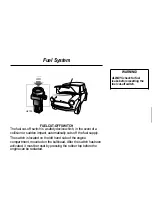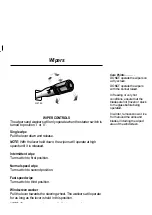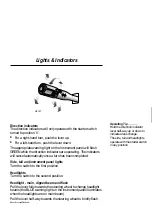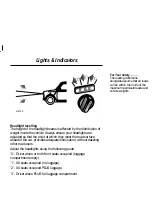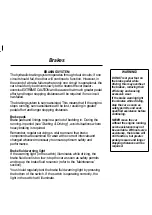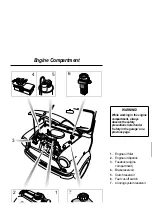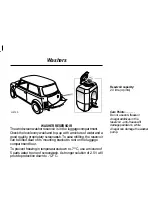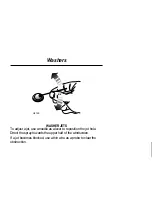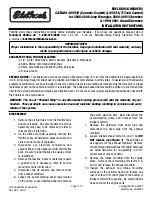
Brakes
46
BRAKING SYSTEM
The hydraulic braking system operates through dual circuits; if one
circuit should fail, the other will continue to function. However, in
the event of a brake failure where only one circuit is operational, the
car should only be driven slowly to the nearest Rover dealer -
exercise EXTREME CAUTION and be aware that much greater pedal
effort and longer stopping distances will be required if one circuit
has failed.
The braking system is servo assisted. This means that if the engine
stops running, servo assistance will be lost, resulting in greater
pedal effort and longer stopping distances.
Brake pads
Brake pads and linings require a period of bedding in. During the
running-in period (see ’Starting & Driving’), avoid situations where
heavy braking is required.
Remember, regular servicing is vital to ensure that brake
components are examined for wear at the correct intervals and
changed whenever necessary to ensure optimum safety and
performance.
Brake fluid warning light
If the warning light (in the switch) illuminates while driving, the
brake fluid level is too low; stop the car as soon as safety permits
and top up the brake fluid reservoir (refer to the ’Maintenance’
section).
You should regularly test the brake fluid warning light by pressing
the bottom of the switch. If the switch is operating correctly, the
light in the switch will illuminate.
WARNING!
DO NOT rest your foot on
the brake pedal while
driving; this may overheat
the brakes, reducing their
efficiency and causing
excessive wear.
If the brake warning light
illuminates while driving,
stop the car as soon as
safety permits and seek
qualified assistance before
continuing.
NEVER move the car
without the engine running,
servo assistance may not
be available. Without servo
assistance, the brakes will
still function, but greater
pedal pressure and longer
stopping distances will be
required.










